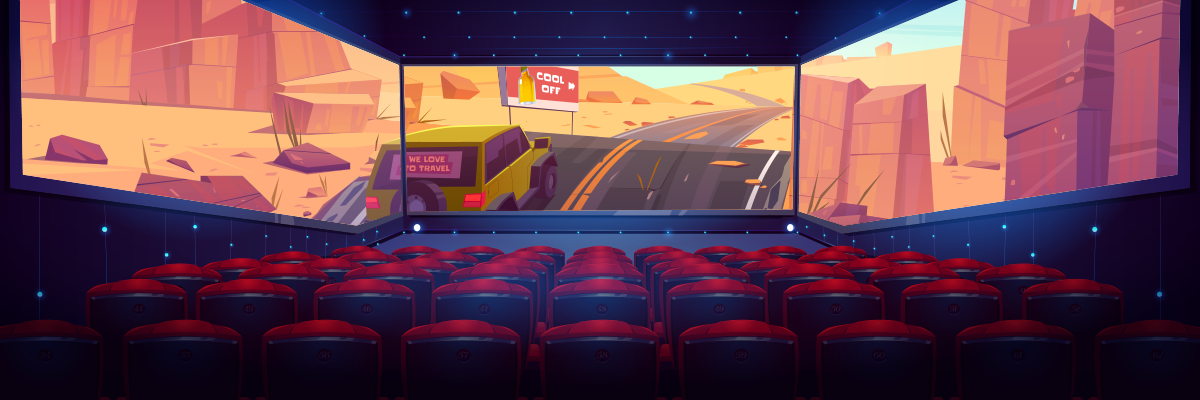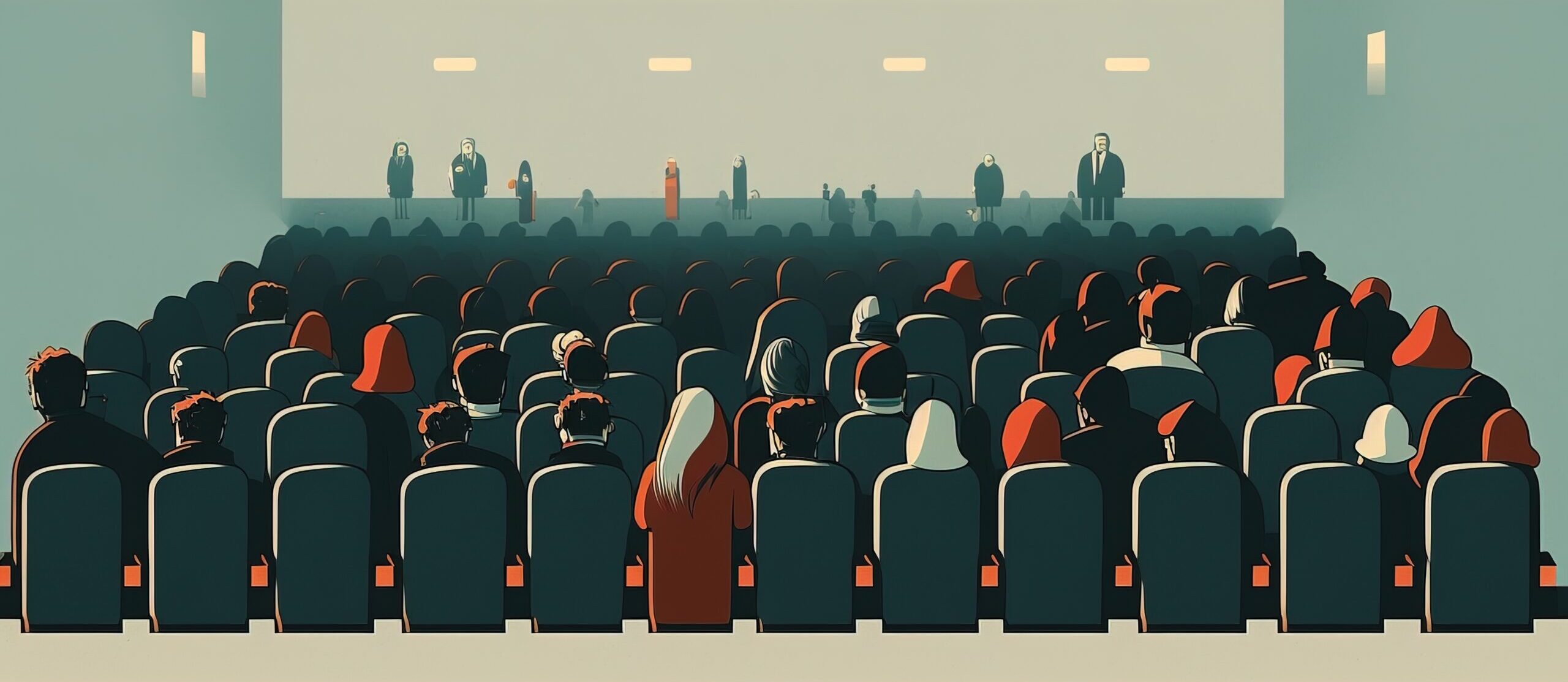In the wake of some enormously financially successful blockbusters, it’s tempting to conclude the theatrical sector and cinema are on their way back. On the flip side, with the demise of independent cinemas in the UK, including Edinburgh’s Filmhouse and Wolverhampton’s Light House, and multiplex chain operators, such as Cineworld, going into administration, many indicators exist of choppy waters at best, and already sinking ships at worst. However, the art of exhibiting cinema has been undergoing an identity crisis for some time, even before the COVID-19 pandemic.
Although the enormous financial pressures placed on cinemas since the pandemic began accelerated matters, there have been signs that the actual cinema has long been secondary to the ‘cinema experience’ so feted by many cinephiles. The exorbitant cost of concessions has been a running joke since time immemorial amongst regular attendees of picture palaces. Smuggling in things bought from supermarkets next door has become a rite of passage. There has, however, been a shift in the past decade-plus to eking out money using frivolities and gimmicks attached to how the film is shown, frequently at the expense of the work itself.
The most widely adopted to date has been 3D exhibition, with opinions divided as to whether it makes the experience more ‘immersive’. Since it re-emerged into the zeitgeist with AVATAR, its popularity and effectiveness have waxed and waned. For every notable use of the technology (AVATAR, HUGO, GRAVITY), there have been dozens of lamentable ‘transfers’ with the craft of poorly conceived pop-up books. There are now additional gimmicks to supposedly stay ahead of on-demand home viewing. The 4DX screens that have popped up in many UK locations lend some credence to Martin Scorsese’s oft-derided description of Marvel films being like theme parks more than cinema. ScreenX – a ‘wraparound’ format that resembles CinemaScope on acid – has been fitted to many at great expense. There is even a combination of the two now for maximum migraine development. However, there is yet to be any meaningful use of these two to innovate within the medium, and we would likely be waiting a long time.

“ScreenX and 4DX have] been fitted to many at great expense. There is even a combination of the two now for maximum migraine development. However, there is yet to be any meaningful use of these two to innovate within the medium, and we would likely be waiting a long time.”
Even the most well-regarded and widespread of these alternative formats – IMAX – is rife with marketing jargon and double-speak. Many local multiplexes will advertise ‘IMAX Digital’ screenings of the big releases. The full IMAX format – as touted by Christopher Nolan – uses 70mm film projected horizontally onto an enormous screen. IMAX Digital, in contrast, uses digital projectors of lower image quality, requiring a smaller screen to keep the loss less noticeable. However, marketing such screenings and facilities leans strongly into the IMAX branding. Although this technology results in a larger and brighter image than a typical digital projection, this has been pushed mainly to aid the growth of IMAX Corporation beyond the futuristic domed cinemas and special buildings of the full format.
On the boutique end of things, there is again a diffuse focus on actually presenting the work. Chains in the UK, such as Everyman, and in the USA, such as Alamo Drafthouse, have focused on offering ‘premium’ experiences: comfy seating; cooked food; glassware and cutlery. Not only does this typically come at a premium price, but it once again focuses on the frills of the ‘experience’. Although (usually) more pleasant, it isn’t unusual to find projection issues, missing captions, no screen masking or other issues at these venues. At Alamo Drafthouse, busy screenings will have staff scuttling around to deliver food and drink and clarify orders in hushed tones.

“Although (usually) more pleasant, it isn’t unusual to find projection issues, missing captions, no screen masking or other issues at these [luxury] venues. At Alamo Drafthouse, busy screenings will have staff scuttling around to deliver food and drink and clarify orders in hushed tones.”
Cinema has existed for a long-time – certainly at the populist end – as an art and business duality. What these recent trends highlight is that the business part of this identity is winning. Throwing ever more gimmicks at the audience – whether they are sipping Tango or Tempranillo – misunderstands what the ‘cinema experience’ is (if it even exists in the form typically thought of anymore). When folk reminisce about great cinema experiences years prior, they talk about the film, not the food. People buy home media to relive the cinematic highlights they experienced; they don’t usually install Tango Ice Blast machines in their kitchen. People might favour one cinema over another because of the comfy seating, but they still need good films to watch, and those films presented with their best foot forward, or they’ll stop going.
Focusing on the fripperies has the same air as a restaurant serving fare on slate slabs but overcooking the same tired food. These trivialities have the same feeling as reupholstering an old car but keeping the same clapped-out engine. There are, of course, other trends alongside this which impact the experience, with the devaluing of projection as skilled work the chief among them. However, they all stem from the same root cause: an objective to maximise margins rather than protect the existence of the market. Numerous companies have arguably ignored their core product to focus on the MBA-speak of Unique Selling Points and Value Adds.

“People might favour one cinema over another because of the comfy seating, but they still need good films to watch, and those films presented with their best foot forward, or they’ll stop going.[…] Numerous companies have arguably ignored their core product to focus on the MBA-speak of Unique Selling Points and Value Adds.”
Of the highest-grossing ten films worldwide, seven come from within the Disney stable (eight if you choose to include the original Avatar) and nine within the last 15 years (Titanic being the exception). This stratification of offerings – mammoth blockbusters and small independent or pseudo-independent productions – undoubtedly stifles choice at the typical multiplex. It isn’t unusual (whether by choice or studio/distributor mandate to exhibitors) to see the latest superhero or corporate offering saturate screens with showings every half hour – often with many in these gimmicky formats – while even comparatively recent releases are strangled down to two or even one showing a day. This deluge of uniformity also affects other aspects of the experience, such as the woeful level of consideration given to accessible screenings with captions or baby-friendly screenings for parents. God forbid someone wants to go alone and try to book only one half of a ‘luxury’ sofa seat.
While interviewed about ARMAGEDDON TIME, James Gray highlighted the production mistake related to that shrinking selection better than most. By offering films that are less beholden to the bean-counting, the industry itself reduces the cultural importance of films and shrinks the overall audience. Looking at films beyond behemoth tentpoles is an investment in the audience. Similarly, one could argue that large exhibitors make a similar mistake by focusing on differentiators rooted in ‘the experience’ off-screen. Instead of focusing on quality programming and projection first, they acquiesce to this narrowing of the audience by reducing the cultural importance of cinema itself. Consumption is the primary – only? – focus, over and above appreciation.
“…one could argue that large exhibitors make a […] mistake by focusing on differentiators rooted in ‘the experience’ off-screen. Instead of focusing on quality programming and projection first, they acquiesce to this narrowing of the audience by reducing the cultural importance of cinema itself.”
The past decade or so has also seen prestige TV and streaming series arguably overtake cinema as the generator of cultural moments that cut across generations. This shift goes hand-in-hand with the narrowing range of films at the typical cinema. One could get into a chicken-and-egg argument about what came first, but this doesn’t seem coincidental, even without a direct causal link. One medium which would directly benefit from the improvement in home technology has grown, while the other, where careful management of the experience in a physical venue has dwindled, has seen its role in the cultural conversation decline. (Having said this, the continued clueless thrashing about by media conglomerates trying to make streaming profitable may yet bring the ‘golden age’ of TV crashing down.)
Cinema would benefit from getting back to its roots. By finding ways to glue audience eyes to the screen, rather than a wine list. To have them return to recapture the feeling of escape rather than because they like the wasabi peas. To make the shared experience that which is being projected, rather than the smell of nachos or ‘artisan’ burgers emanating from seat B13.
Reports of cinema’s death are greatly exaggerated, but the attack on the ‘big screen experience’ is coming from inside the building. As the focus on films continues to dwindle, and more and more desperate attempts are made to augment a diminished core experience, cinemagoing increasingly resembles an embodiment of a famous Groucho Marx quote: “I intend to live forever, or die trying.”

